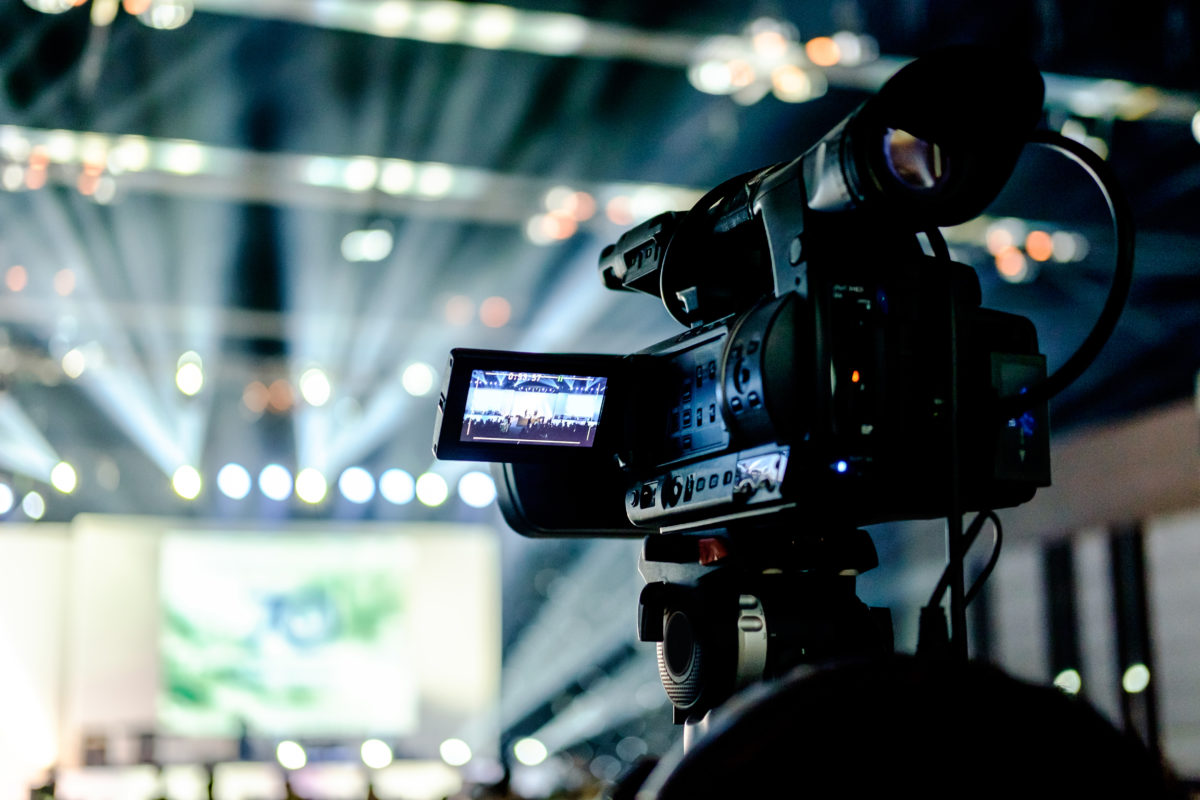
BEST BIG GAME TV Commercial
Another year another mixed bag of Super Bowl commercials (not to mention a huge blowout of a game). Some really stood out to me while others left me wondering if the $8 million price tag for some of these spots worth it? Super Bowl is seen by the largest audience in the world but for some companies it’s still a risk to ride on one 30 second commercial. Here’s my thoughts on my favorite spot this year!
FOX Indy
The FOX Indy TV spot had to take the top spot for me. With the Harrison Ford Jeep commercial, Nike women’s commercial, Uber Eats and the Jordan Hate commercial all in consideration. This was an ad with everything: great funny script, engaging visuals that had a throwback but modern look and style and at the end of the day it engaged the audience (fans or not) to meet one of their drivers and see what their sport is all about.
Pato O’Ward
This guy is a superstar. That’s what I come away with after seeing this spot. I’m not a huge racing fan myself but this still engaged me enough and locked his name in my head for future events, commercials etc. This is a monumental part of branding: getting a logo, phrase, call to action (or in this case a name of a racer) “stuck” in someone’s head. Every line of this script and every visual builds him up and gives him life and personality. Making him the perfect face of the sport, now he just needs to win the big race!
MAD Thoughts
This commercial while hilarious and awesome to watch, also gave us details on the sport mixed in with exciting visuals, transitions and pace. This hooked the people partly paying attention while covering all the bases of a big game spot. This would appeal to a wide audience while also appealing to fans of the sport. They kept it light and funny, but exciting and fast, while still showing us the sport, fans and racers and hopefully (for that $8 million price tag) hooked some new fans.

Pickleball, Beer and Relevance: 2025 Michelob Ultra Super Bowl Ad
Beer is Served
Starting the ad with a hard serve the best-selling beer in America appears on screen to score an easy first point. The beer is being consumed by a pickleball duo. The viewers are engaged but to make it all better, two actors that never lost their buzz appear on screen.
What I mean by not losing their buzz is me simply saying they have stayed relevant for many years. Willem Dafoe & Catherine O’Hara challenge the pickleball partners in a match, winner takes the beers.
The dynamic pickleball duo has a love for the game but an even deeper love for Michelob Ultra. Defeating their opponents with ease in order to be rewarded with more beer.
This Feels Ultra Familiar
This ad succeeds mostly due to one reason. Relevance.
This allows our brains to latch on to the advertisement. In this case it’s three separate links that connect to make it happen. From the jump the beer catches our eye. Beer is the beverage of football fans. Then familiar faces enter the screen, actors in this case. To seal the deal, pickleball is introduced into the ad. Pickleball is the fastest growing sport in America.
Those 3 links have us fully engaged. Now the ad needs to finish the match and make a lasting impression. This is accomplished by scenes of Willem and Catherine comically but mostly in impressive fashion beating their opponents.
Winning Tastes Good
The marketing team at Michelob Ultra rallied to piece together a great ad. Relevance and winning go hand in hand in the advertising world.
Subtract one of the 3 key links to the ad and I feel like it wouldn’t feel as strong as it does now. We wouldn’t be fully engaged. We wouldn’t care as much to be on that winning team.
We would love to be a part of your dynamic duo here at Mad Men Marketing. We want to find your target audience and help you reach them better. Through data and analyzing we will make sure you stay relevant and winning!

Nike Aired Its First Super Bowl Ad in 27 Years — And It’s ALL Women.
Nike came in HOT for Super Bowl LIX, dropping a game-changing ad composed of all iconic women in sports and narrated by recent Grammy award-winning rapper, Doechii. I was only half paying attention to the game, but I was immediately locked in once this ad began. Nike has been around since 1971, and actually even a few years before that, formerly known as Blue Ribbon Sports, and at this point is considered a household name, so why debut a big game ad NOW after almost a 3 decade hiatus?
Stellar Line Up
Nike gave the stage to women on a day where only men play on the field. The ad showed a montage of female athletes, like WNBA powerhouses Caitlin Clark, A’ja Wilson and Sabrina Ionescu, Olympic gold medalist gymnast Jordan Chiles, track and field star Sha’Carri Richardson, footballer Alexia Putellas, and current world No. 1 tennis pro, Aryna Sabalenka. The 60 second masterpiece addresses the list of double-standards that women are constantly being told, but on screen, are proving critics wrong. Showing these women in their element, doing what they do best, and WINNING, was a great way to visually hit the emotional nerve of women everywhere that can relate. Imagine being told you shouldn’t be doing something, or worse, that you CAN’T do it — men don’t know what that feels like. This goes beyond sports.
Something to Prove
So after 27 years, why now? Nicole Hubbard Graham, the brand’s Chief Marketing Officer, says they wanted to tap into one of the few mass cultural experiences we have left. Nike isn’t a stranger to advertising during the Super Bowl, but in recent years, women are flipping the script and there is no better time than now to show their stories. “Women are just absolutely shattering records right now, selling out stadiums, ticket sales, commanding contracts like you’ve never seen before, and being placed with probably some of the harshest expectations of how you’re supposed to act. And I think they will redefine what it means to be athletes and personalities of the future.”, says Graham.
Basically, it’s two middle fingers. One to the critics of women, and the other to the critics of the brand and its relevance. According to Fast Company, this ad was actually the kick off to their new campaign that will continue into this year as the brand tries to reconnect with athletes the same way they did in the past, by using big, irreverent, disruptive, and emotional ideas. Their vision is athletes over algorithms.
So Win
The overarching theme for this ad is simple, its comeback season.
For Nike as it gains new competitors like Hoka and On Cloud, on top of their existing players like Adidas and Brooks, and as the brand battles declining stock (last summer saw its biggest drop since 2001).
For female athletes, who are securing record-breaking contracts and proving their worth on the world stage.
And for women all around the world being told they can’t.
Do it, and do it LOUD! Win on your terms.

Michelob Ultra’s ‘The Ultra Hustle’ Ad: Pickleball, Beer, and the Ultimate Sneaky Hustle
If you haven’t seen Michelob Ultra’s “The Ultra Hustle” yet, stop what you’re doing and go watch it. Seriously. This ad has everything: Catherine O’Hara, Willem Dafoe, pickleball, and the sneakiest, most conniving beer hustle you’ll ever witness. It’s funny, unexpected, and a total win in the world of advertising. Let’s talk about why this commercial works so well—and why we’re still thinking about it.
1. Catherine O’Hara and Willem Dafoe Are the MVPs
First of all, whoever decided to cast Schitt’s Creek legend Catherine O’Hara and the always-intense, something of a genius himself, Willem Dafoe, deserves a raise. These two have kooky chemistry for days, and their dead-serious, shark-eyed approach to hustling people on the pickleball court is chef’s kiss.
O’Hara brings her signature dry wit, and Dafoe’s intense, almost menacing energy somehow makes the whole thing even funnier. Seeing him apply that Green Goblin-level focus to pickleball? Pure gold.
2. Pickleball + Beer = A Match Made in Heaven
Pickleball is having a moment, and Michelob Ultra nailed the timing. By tapping into a sport that’s blown up in popularity, the ad instantly feels relevant & cheesy in all the right ways. But instead of just slapping some pickleball scenes together, they took it a step further—turning the game into a full-blown hustle.
The premise is simple: O’Hara and Dafoe hustle unsuspecting players for their Michelob Ultras. And honestly, who wouldn’t trade a game of pickleball for a cold beer? It’s relatable and ridiculous all at once.
3. The Humor Is Low-Key Hilarious
This isn’t in-your-face slapstick humor; it’s subtle and perfectly timed. The best part? The ad takes itself just seriously enough to make the joke land. O’Hara and Dafoe play their roles like seasoned pool sharks—except with paddles and pickleballs—while their opponents remain blissfully unaware, and honestly a little judgmental (something something don’t judge a book by its cover).
It’s that perfect balance of “Wait, are they really doing this?” and “Oh my God, they are.” The kind of humor that sticks with you and makes you chuckle later when you’re thinking about it.
4. High-Quality, but Not Over the Top
One reason this ad works so well is that it’s polished without feeling overproduced. The pacing is tight, the visuals are crisp, and the vibe is just… cool. Cold beer on a hot day cool, obviously.
The whole thing feels intentional, but not in a trying-too-hard way. It knows what it is—a fun, lighthearted ad that doesn’t take itself too seriously.
5. The Perfect Product Tie-In
And let’s not forget the beer! Michelob Ultra, the third main character in the commercial, weaves itself into the story so naturally. It’s not, “LOOK AT OUR BEER!” It’s more like, “Oh, hey, yeah, this is just what cool people drink when they’re done hustling pickleball.”
By the end of the ad, you’re not just craving a cold Michelob Ultra—you’re also kind of wondering if you should dust off your paddle and hit the court.
The Takeaway
Michelob Ultra’s “The Ultra Hustle” is a welcome reminder that advertising doesn’t have to be complicated to be effective. A great concept, the right talent, and a dash of humor can go a long way. It’s funny, clever, and totally on-brand—proof that ads don’t need to scream to be heard loud and clear.
So, the next time you’re thinking about how to promote your brand, take a page from Michelob Ultra’s playbook: keep it light, keep it fun, and maybe throw in a little pickleball, and a lot of personality.
In (what we assume would be) the words of the iconic Moira Rose: Darlings, are you yearning for an advertising campaign that exudes charisma, uniqueness, and the kind of je ne sais quoi that leaves audiences utterly enchanted? Allow Mad Men Marketing to be your guiding light. Together, we shall craft something fabulously memorable—a pièce de résistance that will have them talking for ages. Now, off you go! Contact us posthaste. 💫

The Three Steps Involved in Creating a TV Commercial
“It is expected that TV advertising revenue in the United States will grow … to 81 billion [dollars] in 2025,” Statista reports. And oh, we know: you want in on that.
But without experience behind the camera — let alone walking meticulously through each step of commercial advertising — you might (understandably) not know where to start.
So, if you’re looking for a basic three-step rundown on the commercial creation process to help you get prepared, simply read on with us:
Step One: Pre-Production
Pre-Production is the planning phase that involves brainstorming, establishing a vision, writing the initial script, and creating a shooting script and/or storyboard.
The difference between a shooting script and a storyboard is that…
- A shooting script is written descriptions of visuals that will be captured to represent the content of the script
- A storyboard includes drawn thumbnails or illustrations to convey what those shots will look like.
Otherwise, in addition to the aforementioned, pre-production may also include “hiring the actors and crew, finding locations, determining what equipment you’ll need, and figuring out the budget,” as explained by MasterClass.
Step Two: Production
Production is precisely what you might expect it to be: it is the process of going on location or into a studio in order to capture all of the video/audio content that will be in the commercial.
This includes shooting scenes with the required actors/talent, capturing any B-roll content to be spliced in, and recording audio (such as voiceovers or custom music).
And remember, when you’re deciding what that content should be, always hone in on the interests in passions of your target audience. This is because “video viewers said relating to their passions is 3X more important than content featuring famous actors,” as reported by Google.
Step Three: Post-Production
Post-production is where everything comes together in the process of editing.
Production specialists will use video editing software to cut together the best shots from the footage that was captured before laying in the audio bed, which includes:
- Voice
- Sound effects
- Music
“Additionally, this is the point at which any other visual elements — like motion graphics — will be added in order to create the final product according to the established vision during the pre-production process,” Mad Men Marketing Director of Production Tamara Dileo says.
And remember: if you aren’t sure what story or message you want to convey on-screen, you’re not alone — Mad Men Marketing is ready to help you adjust your focus!
From photography to videography and more, we’re eager to get behind the camera and help you capture your brand’s vision. After all, our research-driven and content-inspired agency believes that your television commercial should help you to interact with your audience, not interrupt them.
So, are you ready to interact? If so, reach out to Mad Men Marketing today by calling 904-355-1766!


